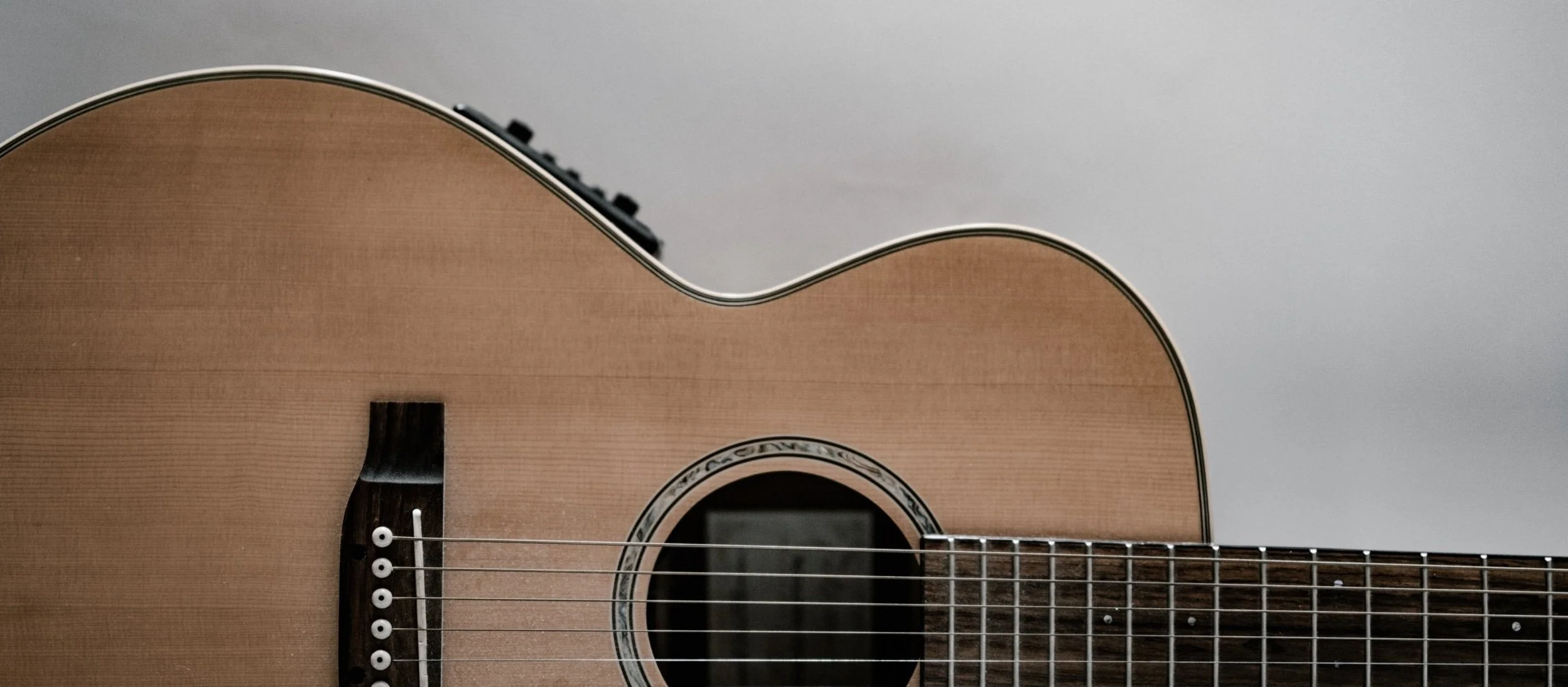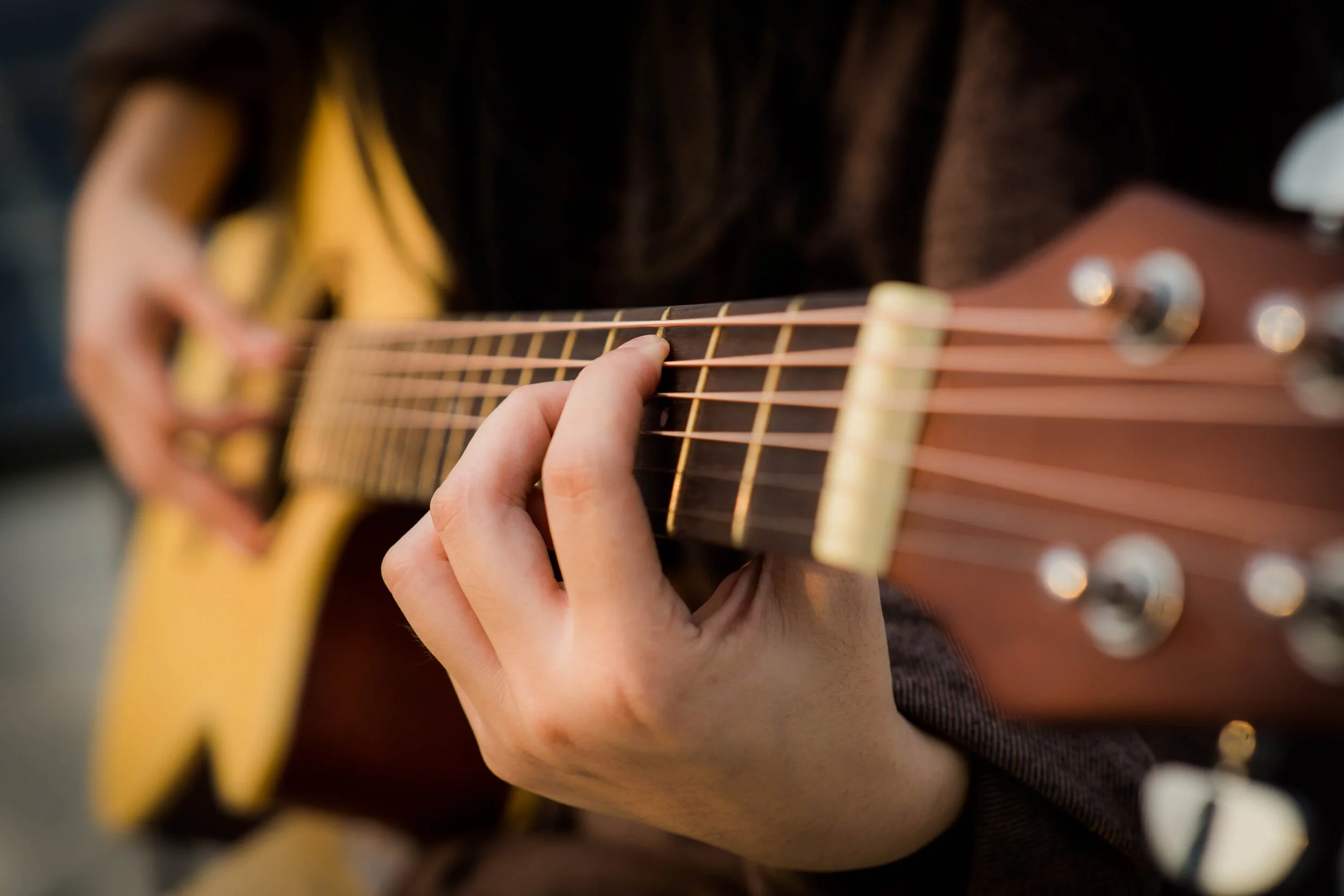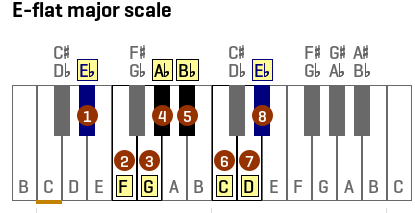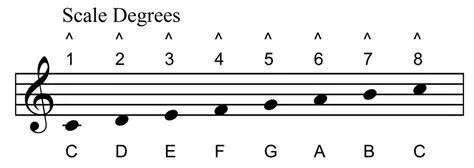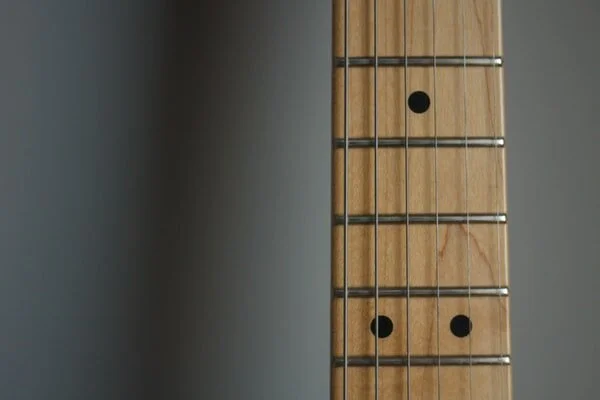Learning to play guitar is tough, challenging, and frustrating. It requires a ton of patience and countless hours of practise. Avoid mistakes and pitfalls with these 12 tips that will teach you the best way to learn guitar.
Introduction
So you want to learn to play guitar? Maybe you just picked one up (if so skip Tip 1), or you are thinking about buying one? Either way follow these 12 tips and you should be on your way to learning guitar in the quickest most efficient way possible!
Learning guitar is like finding your way through a maze. There are lots of different methods out there, many different routes you can take, but many of them lead to dead ends. Learning from a teacher is like having a personal guide through that maze, once they know where you want to go they can show you the quickest way through.
That's why most importantly, we recommend from learning from a teacher. Learning from a guitar teacher is the key to learning quickly, avoiding any mistakes, and not plateauing. This article is designed to help you as much as possible but nothing can beat having an actual teacher.
There are so many different methods out there, and it can be hard to know which one will work best for you, that's why we wrote this article. We wanted to keep things simple and make your learning as easy and straightforward as possible. If you search up the best way to learn guitar you are going to be inundated with millions of different options. Whichever route you take, we recommend that you are patient, set goals, work consistently towards those goals (like setting a habit of playing a certain amount each day), and keep at it!
So without further beating around the bush, here are our 12 Tips or Steps on the best way to learn guitar!
If you want to speed up the guitar learning process and journey, we have world class guitar instructors available for private online guitar lessons available.
Get the Right Guitar
First, decide what style you want to play, and find out what types of guitars are used in those styles. For example, if you are playing folk, an acoustic guitar is your best bet, if you want to learn metal an electric guitar is the best option. Also do you want to play regular guitar or Bass?
An acoustic guitar will give you a great sound for most styles (excluding rock and metal) and you can take it anywhere with you. Playing guitar around a campfire is a really great time. If you want to
Try different types of guitars that are suited towards your the style you want to play. People will often buy a cheap guitars when they start playing, but if you get a total piece of junk you it will be way easier to loose interest. Conversely based on budget it may not be the best option for you to buy the most expensive one you can find. In the end you don't want to get stuck with a guitar that's not suited for your needs.
Be Patient
Once you have a guitar and have decided that you are going to learn how to play, at the beginning of your guitar journey, it's important to make a promise to yourself to be patient. Patience is key, it's going to take you a long time to learn how to play, and you have to forgive yourself for taking a while to get there. Remember to enjoy the journey, because even though it is awesome when you get there, getting there is just as much fun.
Remember to stay patient and take your time. Learning any instrument can be difficult, especially learning guitar, but make a pact that you won't get discouraged! Remember, you will be following a learning curve, and it's something every good guitar player goes through. The key is to stay persistent in practising each day; over time you will become more experienced and as your skills grow, the better your playing will sound.
Set Yourself Up to Win
If you truly want to learn how to play the guitar, it is very important you set yourself up to win. That means planning your guitar learning process, and setting habits that will get you there. Once practising becomes a daily habit it's like you put your learning on autopilot.
The first thing you should do, is figure out what you want to learn. When you have "learned to play the guitar" (We say this objectively because you never really stop learning guitar), what do you want to know? What do you want to be able to play? Who do you want to sound like?
For example, I want to be able to play 20 AC/DC songs, I want to be able to improvise solos like Angus Young, and I want to Sound like Angus Young.
The next thing you should do is figure out how much time you can dedicate to practising each day. The more, the better! You don’t need hours and hours of practice every single day (although it would be awesome if you could!), at minimum you should be practising 10 minutes a day, but if you can't, 15-30 minutes a few times per week is ok, but most optimally 30 minutes a day will help tremendously with your progress.
The next step is to create a plan that outlines what you need to learn, and in which order. This way it is much easier for your brain to absorb the information because there is no guess work on how things should be learned.
Don't just write out a long list of skills you want or need to learn; this will get overwhelming very quickly, but rather organize that list into categories and set goals and deadlines for when you will learn those things by.
For example:
Learn how to strum 8 different pattern and get comfortable with strumming by the end of the Month
Learn the D Chord by the end of the week, Learn The C Chord by the end of next week, Learn two more Chords by the end of the Month
Get comfortable with switching between each of those chords by the end of the month
Learn the basic chords / chord progressions in G Major, Emaj and C major by the end of the year
If you truly want to learn how to play the guitar, it is very important you set yourself up to win. That means planning your guitar learning process, and setting habits that will get you there. Once practising becomes a daily habit it's like you put your learning on autopilot.
The ultimate goal is to have a step by step plan that leads you from being an absolute beginner up until becoming masterful at playing your chosen instrument. With this process of setting yourself up for success, you will have a much better chance of achieving your goal.
Having a teacher help you, will help you to set these goals in an achievable and realistic way.
In the beginning it is important to stay motivated and committed so be sure to set small goals that can help keep you on track with practising each day. Once these habits are established then more challenging tasks should also become easier as well because they will eventually just seem like another normal part of your practising.
You should set yourself up in a way that makes it easy for you to succeed and stay focused on the end goal of being able to play songs, improvise solos or be band ready! If you want something bad enough then nothing should stop you from achieving it. You just have to learn how to set yourself up to win.
Start with the Basics
Starting with the basics gives you a solid foundation to grow from. It's like building a pyramid, each level you go up is only as strong as the foundation below it. It may not be as exciting as learning to play a solo or strum the chords of a song, but learning the basics will help speed up learning in the long term once you know your way around the instrument.
Learn the parts of the guitar
First you should learn the parts of the guitar, there are many resources you can find online which will help you with this. This is a sure way to understand what your teacher or source for learning is telling you to do.
Learn how to set up a guitar
Next You should learn how to set up a guitar. Learning how to tune your guitar, how to keep it in good working order, and even restringing it and doing basic maintenance will help you sound good when you play and help you stay motivated.
Learn how to tune your guitar
Once you know how to set up your guitar, you should learn how to tune it. Tuning the strings of a guitar can be tedious, especially if you're new to it. Try using an online tuner or buying a good electric tuner. In time as your ear develops you can learn to tune by ear. All you will need is one reference pitch, but that's for when you get more advanced. It's also important that you always double-check your tuning before you start playing.
Learn how to hold a pick correctly
Next you should learn how to hold a pick correctly. Learning to hold a pick correctly will prevent fatigue or injury to your picking hand and enable you create better sound. You can find resources on the internet which can teach you to hold a pick.
Learn how to Strum
After you learn it's a good idea to learn how to strum. Strumming though a very basic movement, can be very tricky to learn, so it will take you some time to get the hang of it. There is more about strumming below.
Learn to actually play notes
Once you know how to strum, it is important to learn how to actually play notes on your guitar. This is where you place your fingers on the fretboard and strum a string or strings to play a note or notes. The notes should clearly ring out.
Learn the names of the guitar strings
Next you should learn the names of the strings, and learn the notes on the fretboard. This can help you identify notes quickly and help you with learning guitar later on. This will set you up for more advanced things like sight reading, reading tablature, or even improvising and learning scales.
Learn Chords
This next section, learning to play chord shapes is optional if you are going to get a guitar teacher. If you are going to get a teacher there isn't any need to master this step as a teacher can guide you through this process and even make it easier.
After you learn how to strum, then the next thing is to learn chords and learn chord shapes and where they are on your guitar(again optional if you are going to get a teacher). It's important that you know this even if it isn't something new (if you already understand and read music) because knowing the chord shapes, and knowing what notes make what chords and shapes, makes making music significantly easier.
Get a Guitar Instructor
Finding a guitar teacher (someone who can teach you how to play) is one of the best choices you can make if you want to learn how to play guitar properly and quickly. As a matter of fact in our opinion it is the best way to learn guitar. As we said above, learning guitar is like finding your way from point a to point b in a maze. There are lots of different ways to get through, many different routes you can take, but many of them lead to dead ends. Learning from a teacher is like having a personal guide through that maze, once they know where you want to go they can show you the quickest, easiest, and smartest way through.
Guitar lessons with a teacher is one of the best, most efficient ways to become a better guitarist. A teacher won't let you make mistakes, they will correct your bad habits before they become ingrained in your playing style. They can help you develop a practice schedule that's best for you - depending on what kind of music you want to play, and how quickly or slowly you want to get there.
They can get you quickly to your goals. Do you want to learn how to read music or tabs? Do you want to fully understand the fretboard? And most importantly, they can teach you what is best for your playing style: finger picking or strumming? Classical guitar or flamenco? Blues or jazz ?
Also, taking guitar lessons from a teacher will allow you to ask questions and get answers quickly which you may not find online. If they are a good teacher then their job is to help you learn the guitar in whatever way works for your own personal style of playing, so make sure that before you start taking lessons with someone (especially if its expensive) make sure you know a bit about their teaching style and find out what they focus on and if it seems right for you.
If you think learning from a teacher is right for you, LectureOwl provides private online guitar lessons with world class teachers. You can see our guitar teachers available here.
Practise Strumming
Learning how to strum properly is one of the most important things you can learn on the guitar. Strumming is how you express yourself, how you annunciation notes, and create dynamics, especially if you are playing acoustic music or playing songs with a clean sound (without distortion).
Learn how to play with different strumming patterns. Strumming is an important part of playing the guitar because it can helps keep the beat and can make your songs sound better. You should practise as many different strumming patterns as you can, both strumming all of the strings at once and strumming one string at a time. It is also good to practise strumming each individual string by itself, as each is in a different location and will take some practise to get comfortable with. For example you would start by strumming the low E string, going through each pattern and working your way up to the high E string.
Here are some examples of common strumming patterns it is good to practise:
Strumming (all of the strings) and (one string at once):
(Each one of these can be repeated until you are comfortable with them.)
Down, Down, Down, Down,
Down, Up, Down, Up,
Up, Up, Up, Up,
Down, Down, UP
Down, Up, Down, Down,
There are many more patterns you can work on, and you can get creative and come up with your own once you master these. Once you have mastered individual strings, the next more advanced step is string skipping. This is when you switch from one string to another, for example strumming the low E string a couple of times, switching to the A string for a strum and back up to the E string.
E (Down), E (Up), A (Down), E (Up)
An essential tool for improving your strumming, and for overall practise, is playing with a metronome. If you don't have a metronome you can use your phone. There are hundreds of free apps that will allow you to play with a virtual metronome - no need to buy an expensive device.
Practise Changing Chords
As mentioned above in the basics, learning chords and chord forms is very important as most music is chord based. It is also important to learn how to switch between chords smoothly. This will not happen overnight and will take some practise but there are techniques that may help speed up the process.
Once you have learned two separate chords, you can practise by switching between the two. Strum the first chord for a count of four, then switch to the second and strum it for a count of four, then switch back.
It may be super annoying and challenging at first, but keep practising those chord changes. Over time you will find that you get much better and you will find songs more enjoyable and exciting to play. Another good tactic, and the next advanced step, is learning how to play chord progressions.
Chord progressions are a grouping of chords which when played in order make up the backbones of most music. For Example C, G, E, D.
Learn Songs
Another way to improve quickly and help you stay motivated is to learn songs.
Think about the songs that inspire you and that you want to learn to play. It's much easier to learn how to play guitar when you are motivated by music. Try picking out parts of different songs that sound interesting, and then try learning those techniques. Learning music theory is also very valuable because it can give you a better understanding of the different scales and chords that are commonly used.
Start out with some basic songs, your teacher can help you pick something out if you don't have something in mind already. Once it is possible, practising playing along with your favourite songs can be an excellent way to learn new techniques and become better at the instrument. This is also helpful because it will help keep your motivation high since you'll enjoy practising more when your favourite music is involved.
If you aren’t going to get a music teacher and don’t know where to start, Strummingly has a list of 39 easy guitar songs for beginners.
Practise Scales
The next step, and a very important one if you want to become a guitar virtuoso, want to learn how to improvise or play solos, and want to get a better understanding of music is to learn and practise scales. Scales are a very important part of music and learning music theory will help you here.
Learning different guitar scales can also be a very useful tool for improving your technique. There are many types of guitar scales, but the most common and most popular is a major scale. Think of a very happy upbeat song, think Disney, that is most likely a major scale. Another really popular scale, and the same scale but just starting from a different note is a minor scale. A minor scale sounds sad, dark, scary or melancholy. A lot of metal music and sad songs are based on major scales.
If the sections about a major and minor scale being the same but starting from a different note confused you, don't worry. It can be a bit of a challenging idea to get at first. An example is a C major scale has the same notes as an E minor scale.
At it's most basic a scale is a group of notes that a passage of music is made from. You can learn more about scales here.
Once you become more advanced you can practice playing in different keys. Changing the key of a song can be difficult when you first start out, but it's important to learn how to do this if you want to keep learning new songs! If you are struggling with changing between all 12 possible keys, try starting with some easier ones like C and G major.
Learn to Improvise
Once you know how to play scales and chords, learning to improvise is pretty easy. Basically you are just playing notes, melodies or chords within the confines of a key, or scale. Once you get more advanced you can experiment leaving the confines of a scale or key, but for now that's the safest place to be.
The best way to learn how to improvise is simply by doing it. Once you know the scales well enough, try playing them in different ways and come up with your own melodies over chord progressions that you like.
Another very helpful tool for learning to improvise is a backing track. A backing track can be something as simple as listening to music without lyrics, you can also find backing jam tracks on youtube, if you are learning from a teacher you can get them to play a backing track for you while you improvise.
Play with Others
Playing guitar along with others will push your ability further because it requires thinking quickly about chord progressions, melodies and harmonies. It can also be a great way to get feedback from others about what mistakes you might be making, or some cool techniques or things you can try out.
Once you start jamming with your friends or family members, you will find your learning progresses at a much faster rate, because you are getting the chance to try things out in real time. It can be helpful for each of you learn the same stuff before playing songs with each other so everyone is on the same page musically.
Once your skills improve you can even try playing in a band. There is a really magical feeling when you are playing along with a group of people and you guys are making magic.
Keep Practising
The final and most important tip on the best way to learn to play guitar is to keep practising. Every time you practise it's like laying a brick in a pyramid. Over time you will find that you've built something magnificent. The great thing about learning guitar is that once you get good, it's a skill you will always have.
So make sure you commit to keep practising, If you can stay dedicated in practising for at least 30 minutes each day you will be an expert before you know it. The only caveat here, is that you have to also make sure you are always learning new things.
If things ever feel too hard or frustrating just remember that every professional musician went through this and eventually got better at their instrument. Every pro musician had to work through this, and the better they are, the more work they put in. Keep doing your best, even when you aren't making any progress.
Conclusion
Thanks for reading our guide on the twelve steps on the best way to learn guitar! All the stuff listed above will get you started learning the guitar and in our opinion is the best way to begin your guitar journey. There are many other things that can really help, like learning to read music and studying theory. The more you know about the instrument and music in general, the easier it will be for you to learn new techniques, songs and work your way around obstacles when they arise while playing guitar.
The most important thing is that you keep playing every day and don't give up on your passion for the guitar. Think of all those people who say they will never be able to learn guitar. They never will because they stopped trying. Keep going even on the crappy days and you will find yourself playing your favourite songs in no time, with a big smile on your face. So keep playing and keep doing your best, even when you aren't making any progress.


